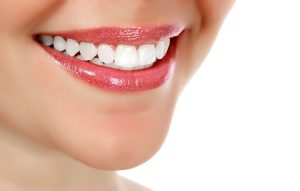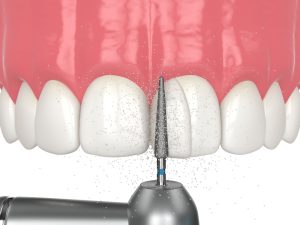Affordable, Fast Smile Enhancement with Tooth Bonding
Minor imperfections in your smile—a chipped tooth, a small gap, or slight discoloration—can affect your confidence more than you might expect. Cosmetic dental bonding offers an accessible, conservative solution that transforms these concerns in a single appointment without the time and expense of more extensive treatments. At Pristine Dental, our Scottsdale cosmetic dentists utilize advanced composite bonding techniques to repair and enhance teeth while preserving your natural tooth structure and delivering results that blend seamlessly with your smile.
Serving patients throughout Scottsdale, Paradise Valley, Fountain Hills, and Phoenix from our convenient East Thomas Road location, Dr. Cooper and Dr. Smith offer cosmetic bonding appointments that fit easily into your busy schedule. Call (480) 935-2424 today to schedule your cosmetic bonding consultation and discover how this versatile treatment can enhance your smile.
What is Cosmetic Dental Bonding?

Cosmetic dental bonding is a conservative aesthetic procedure that uses tooth-colored composite resin material to repair chips, close gaps, reshape teeth, and cover minor discoloration. The composite resin—the same material used for tooth-colored fillings—is carefully applied to the affected tooth, sculpted into the desired shape, hardened with a specialized curing light, and polished to match the texture and sheen of your natural teeth. The result is a seamless enhancement that addresses your aesthetic concerns while preserving the maximum amount of your natural tooth structure.
Unlike veneers or crowns that require tooth preparation and laboratory fabrication, bonding can typically be completed in a single appointment lasting 30 to 60 minutes per tooth. The procedure is usually painless, requiring no anesthesia unless bonding is being used to fill a cavity or reshape a tooth near the nerve. This combination of convenience, affordability, and natural results makes cosmetic bonding an attractive option for patients seeking to improve their smile without extensive dental work or significant time investment.
The Cosmetic Bonding Process at Pristine Dental
Understanding what to expect during your bonding procedure helps you feel comfortable and confident about treatment. Our streamlined process ensures excellent results with minimal time in the dental chair.
Initial Consultation and Planning
Your cosmetic bonding journey begins with a thorough evaluation and discussion of your aesthetic goals. Dr. Smith examines the teeth you’d like to enhance, assesses your overall oral health, and discusses how bonding can address your specific concerns. We’ll show you shade guides to select composite resin that perfectly matches your natural tooth color, and explain what you can expect from the procedure and final results.
If bonding is appropriate for your situation, we can often begin treatment the same day. For patients requiring multiple teeth or more complex enhancements, we may recommend a separate bonding appointment to ensure adequate time for optimal results.
Tooth Preparation
One of bonding’s greatest advantages is its conservative nature. Unlike veneers that require enamel removal, bonding typically needs minimal or no tooth preparation. We lightly etch the tooth surface to create texture that helps the composite resin adhere securely. This etching process is painless and removes only microscopic amounts of enamel—far less than any other cosmetic restoration.
For teeth with decay or damage, we’ll remove only the compromised tooth structure before applying the bonding material. Local anesthesia ensures complete comfort during any preparation requiring the removal of tooth structure.
Composite Application and Shaping
Once your tooth is prepared, we apply a conditioning liquid that further enhances bonding strength. The tooth-colored composite resin is then applied in layers, with each layer carefully shaped and hardened using a special curing light. This layering technique allows us to build up the tooth gradually, creating natural contours and translucency that mimics real tooth structure.
Dr. Smith’s artistic skill becomes particularly evident during the shaping process. She sculpts the composite to achieve proper proportions, smooth contours, and a natural appearance that complements your other teeth and facial features. This attention to aesthetic detail distinguishes professionally performed bonding from rushed or poorly executed work.
Finishing and Polishing
 After achieving the desired shape, we trim away any excess material and smooth all surfaces. The bonding is then polished using fine polishing tools and compounds that create a lustrous surface matching your natural tooth enamel. Proper polishing is essential for both aesthetics and longevity, as smooth surfaces resist staining better than rough ones.
After achieving the desired shape, we trim away any excess material and smooth all surfaces. The bonding is then polished using fine polishing tools and compounds that create a lustrous surface matching your natural tooth enamel. Proper polishing is essential for both aesthetics and longevity, as smooth surfaces resist staining better than rough ones.
We’ll check your bite to ensure the bonded tooth doesn’t interfere with your natural chewing motion, making any necessary adjustments before you leave. The entire process typically takes 30 to 60 minutes per tooth, with multiple teeth often completed in a single appointment.
What Can Cosmetic Bonding Fix?
Cosmetic dental bonding addresses a variety of aesthetic concerns, making it one of the most versatile treatments in cosmetic dentistry. Common applications include:
- Chipped Teeth: Bonding restores the original shape and appearance of teeth damaged by trauma or wear, seamlessly rebuilding the missing tooth structure.
- Tooth Gaps: Small to moderate gaps between teeth can be closed by bonding composite resin to one or both adjacent teeth, widening them slightly to eliminate the space.
- Discolored Teeth: Teeth with stains that don’t respond to whitening—particularly those caused by medications or fluorosis—can be covered with bonding to achieve a brighter appearance.
- Uneven or Misshapen Teeth: Teeth that are too small, oddly shaped, or asymmetrical can be reshaped with bonding to create better proportions and improved smile symmetry.
- Minor Alignment Issues: Very slight crowding or irregular tooth positioning can sometimes be camouflaged with strategic bonding, though more significant misalignment requires orthodontic treatment.
- Exposed Tooth Roots: Gum recession that exposes sensitive root surfaces can be covered with bonding to reduce sensitivity and improve appearance, though addressing the underlying cause of recession is essential.
- Worn Tooth Edges: Teeth worn down from grinding or acid erosion can be rebuilt to restore their original length and protect them from further damage.
Benefits of Choosing Cosmetic Bonding
Cosmetic bonding offers numerous advantages that make it an appealing choice for appropriate cases, particularly when compared to more extensive cosmetic treatments.
- Conservative Treatment: Bonding preserves your natural tooth structure, requiring little or no enamel removal. This conservative approach protects your teeth while still achieving significant aesthetic improvement.
- Single-Appointment Completion: Unlike veneers or crowns requiring multiple visits and temporary restorations, bonding is typically completed in one appointment. You leave our office with your enhanced smile the same day.
- Affordable Investment: Bonding costs significantly less than porcelain veneers or crowns, making smile enhancement accessible for patients with limited budgets. The excellent results-to-cost ratio makes bonding an exceptional value for appropriate cases.
- Painless Procedure: Most bonding procedures require no anesthesia, as the process involves minimal or no removal of tooth structure. Patients typically experience no discomfort during or after treatment.
- Natural Appearance: Modern composite resins come in numerous shades and can be layered to create depth and translucency that closely mimics natural tooth enamel. Properly performed bonding is virtually undetectable.
- Versatile Applications: Bonding addresses multiple aesthetic concerns—from chips and gaps to discoloration and shape irregularities—often in a single procedure.
- Reversible Treatment: Unlike veneers that permanently alter your teeth, bonding can be removed or replaced without damaging your natural tooth structure, providing flexibility for future treatment options.
Caring for Your Bonded Teeth
Proper maintenance extends the lifespan of your cosmetic bonding and keeps your smile looking fresh and natural. Follow these care guidelines:
Daily Oral Hygiene
Brush your bonded teeth twice daily using a soft-bristled toothbrush and non-abrasive toothpaste. Abrasive toothpastes or hard-bristled brushes can dull the bonding’s polished surface over time. Floss daily around bonded teeth just as you would your natural teeth, being gentle but thorough to prevent plaque buildup and gum disease.
Protect Against Damage
Avoid biting hard objects like ice, pens, fingernails, or nutshells that can chip the bonding material. Don’t use your teeth as tools to open packages or tear tags. If you grind your teeth at night, wear a custom nightguard to protect both your bonded teeth and natural teeth from excessive forces. Athletes should wear proper mouthguards during contact sports to prevent trauma.
Minimize Staining
While bonding material is initially stain-resistant, it can gradually absorb color from heavily pigmented foods and beverages. Limit consumption of coffee, tea, red wine, and dark sodas, or rinse with water after consuming them. Tobacco use causes significant staining of composite bonding and should be avoided to maintain your bonding.
Regular Professional Care
Maintain your regular dental cleaning and examination schedule—typically every six months. During these visits, our hygienists clean and polish your bonded teeth, helping maintain their appearance. Dr. Smith also monitors the bonding for wear or damage, addressing any issues promptly to prevent more extensive problems.
Address Issues Promptly
If bonding becomes chipped, discolored, or loosened, contact our office rather than waiting for your next scheduled appointment. Small chips can often be repaired quickly, while extensive damage may require replacing the bonding. Addressing problems early prevents them from worsening and typically results in simpler, less expensive repairs.
Cosmetic Bonding Costs in Scottsdale
The cost of cosmetic dental bonding varies based on several factors, including the number of teeth being treated, the complexity of the work, and the extent of reshaping required. At Pristine Dental, bonding typically costs significantly less than porcelain veneers or crowns, making it an accessible option for patients seeking smile enhancement on a budget.
 Several factors influence the final cost of your bonding treatment:
Several factors influence the final cost of your bonding treatment:
- Number of Teeth: Each tooth requiring bonding adds to the total cost, though treating multiple teeth in one appointment is often more cost-effective than spacing treatments across several visits.
- Complexity of Work: Simple repairs like small chips require less time and material than extensive reshaping or gap closure, which affects pricing accordingly.
- Additional Procedures: If bonding is combined with other treatments like teeth whitening or gum contouring, the comprehensive treatment cost reflects all procedures performed.
- Insurance Coverage: While purely cosmetic bonding typically receives no insurance coverage, bonding used to repair damaged or decayed teeth may receive partial coverage under your plan’s restorative benefits.
Our administrative team provides detailed cost estimates during your consultation, explaining what your insurance covers (if applicable) and your out-of-pocket responsibility. We also offer flexible payment options to make cosmetic bonding accessible for patients without insurance coverage or for amounts exceeding their benefits. The excellent results-to-cost ratio makes bonding one of the most cost-effective ways to enhance your smile, particularly for addressing minor aesthetic concerns.